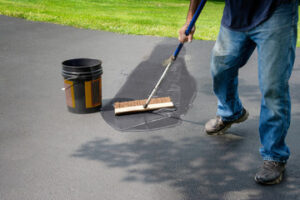Party Rentals offer equipment and supplies like tables, chairs, and decorations for special events. They also provide services like delivery and pickup of items. Some companies even provide liability insurance to protect their business.

Many people hire party rental companies because they save them time from searching for specific pieces. They also tend to have a larger selection of items than individual consumers can find on their own.
Having the right equipment and supplies can make or break a party rental business. Depending on the industry, this can include large items such as tents, market umbrellas, tables and chairs, catering and cooking equipment, stages and dance floors, or decorative items like centerpieces and table cloths. It also includes smaller items, such as barware, chair cushions, and party favors. Having a well-stocked inventory means a company can accommodate a wide variety of event sizes, from intimate dinners to sizeable extravagant shindigs.
As with any business, the success of a party rental business depends on thorough market research and developing a comprehensive business plan. It also requires effective marketing strategies and efficient procedures. Using software programs such as Rentman can help streamline operations, save time in planning, and give financial documents a more professional look.
There are a few different types of business structures to consider when starting a party rentals business, including sole proprietorships, partnership, and limited liability corporations. Business structure is a personal choice that is dependent on the owner’s goals, level of experience, and budget.
To start a successful party rental business, it’s essential to create a comprehensive business plan that includes an outline of the services you will offer, pricing strategy, and projected revenue. In addition to this, it’s important to stay up to date on the latest trends in the industry. This can be done by scouting out local events, conducting surveys, and networking with other businesses in the industry.
The most common rental equipment for parties include outdoor gear to host the event, such as tents and canopies, tables and chairs, dishes and flatware, catering and cooking equipment, dance floors, and sound systems. More specialized items, such as bounce houses and concession machines, may also be available.
A good customer service and reliable equipment are key to growing a business in the party rental industry. Offering exceptional service to customers can lead to referrals and repeat business. Networking with other businesses in the industry, such as event planners and venues, can also provide new business opportunities.
Business Structure
A party rental business can be a great opportunity for entrepreneurs who are passionate about event planning and have a knack for it. Conducting thorough market research and developing a solid business plan can help you create efficient procedures and marketing strategies to maximize your profits.
It is important to consider the legal structure of your business when getting started. Different entity types have different tax and liability requirements, so it is important to discuss your options with a professional. Some of the most common options for small businesses include sole proprietorships, corporations, partnerships and LLCs. A LLC is a hybrid option that combines the personal liability protection of a corporation with the flexibility and simplicity of a partnership.
One of the most critical aspects of a successful party rental business is having a comprehensive inventory management system in place. This includes tracking the location of each item, establishing rigorous inspection and cleaning processes for items after each use, and incorporating regular maintenance costs into your rental pricing strategy. Incorporating these processes into your business model will help you avoid costly repairs and replacements in the future, and ensure that your rental inventory is always in excellent condition.
In addition to a robust inventory management system, it is also important to establish a good customer service culture to attract and retain customers. Word-of-mouth recommendations are an effective marketing strategy for your business, and providing exceptional customer service will earn you referrals from satisfied clients. Additionally, implementing cost-effective digital marketing strategies like creating a user-friendly website and webstore, social media promotion, influencer marketing, and limited-time discount promotions can boost your online sales.
Another key aspect of running a successful party rental business is having insurance coverage in place to protect your assets from potential liabilities. General liability insurance is a must-have, as it will cover third-party claims of property damage or bodily injury while you are operating your business. Consider adding additional coverage such as professional liability or commercial auto insurance, depending on the scope of your services.
Lastly, if you are running your party rental business out of your home, it is important to check with local government officials about specific regulations regarding operating a business in residential areas. You may be required to obtain a business license and/or zoning permits, and may need to follow strict health and safety guidelines.
Marketing
A well-rounded marketing strategy can ensure a steady flow of customers for your party rental business. Crafting quality content, such as themed party guides and troubleshooting rental concerns, establishes your company as a resource and fosters an emotional connection with audiences. Additionally, promoting your business on social media and hosting contests can build brand awareness and attract new clients.
Consider specializing your business in a specific area to differentiate yourself from competitors. Performing market research can help you pinpoint the needs of a particular audience and develop targeted content that sets your business apart. You can also leverage your network and partners to promote your services. For example, partnering with local event planners or venues can allow you to reach new audiences and offer discounts on your rental items.
Developing a website or online storefront makes it easy for customers to view your inventory and make inquiries or bookings. This will eliminate the need for back-and-forth emails and phone calls, and streamline the process. A website can also be used to track customer engagement and measure the effectiveness of your marketing campaigns.
In addition to having a website, you should invest in professional equipment and supplies that can withstand repeated use. Investing in high-quality, durable products is essential for keeping your costs low and maximizing profit potential. Moreover, offering multiple types of rental items will allow you to cater to different event sizes and themes.
Another effective marketing strategy is SEO. This involves optimizing your content to appear higher in search engine results pages, allowing you to capture traffic from audiences actively looking for party rentals. However, achieving top rankings on Google can be a challenge for small businesses with limited resources.
Consider using a tool such as ClickUp to manage your marketing campaign and identify the most profitable strategies. It can also help you track the success of your marketing efforts, enabling you to make informed decisions about future business operations.
Starting a party rental business requires thorough research, developing a solid business plan, and setting up efficient procedures and marketing strategies. Additionally, you will need to secure funding to cover startup expenses, including inventory and rental items, delivery vehicles, marketing, and more. You can explore options such as crowdfunding, small business loans, or investors to meet your business requirements.
Customer Service
It is important to have good customer service to attract customers and keep them. This means ensuring that your staff is knowledgeable and friendly. It also means offering a wide range of products and services to meet customer needs. Some of these include staging, kitchen equipment, flatware, furniture, and barware. Providing a wide variety of options can make your business stand out from other party rental companies. It is also important to keep your inventory clean and well-maintained. This involves developing a rigorous cleaning and checking process for each item. It should be done before and after each use. This can prevent damage and deterioration of the items. It is also helpful to include the cost of maintenance and cleaning into your rental pricing strategy.
All Borough Party Rentals is a party rentals company that offers a full selection of high-quality rental supplies in the Maspeth area. Their team of event rental specialists works closely with each client to ensure that their vision is brought to life. They offer a large inventory of tents, tables and chairs, chinaware, glassware, miscellaneous equipment, platforms, easels, and more. Previous clients have praised the company for its superior customer service.
Another great way to market your business is by creating a strong online presence through a webstore and social media channels. This will help you to reach a larger audience and increase your sales. You can also increase your revenue by implementing referral programs and offering specialized discounts and limited-time offers.
In addition to marketing, you should also focus on establishing a good relationship with local government officials. This will help you to stay in compliance with local regulations and get the permits and licenses necessary for your business. You will also need to obtain insurance coverage to protect your assets and inventory. Lastly, it is important to establish a solid financial foundation by opening a bank account and setting up credit lines.
Running a party rental business requires excellent organizational skills. You will need to keep track of all your equipment, customers, and orders. Using rental management software will allow you to manage all of this information in one place and save time. Many rental management tools come with a webstore, so you can accept bookings online. Some even offer reporting modules and analytics, which can provide valuable insights into your business.








